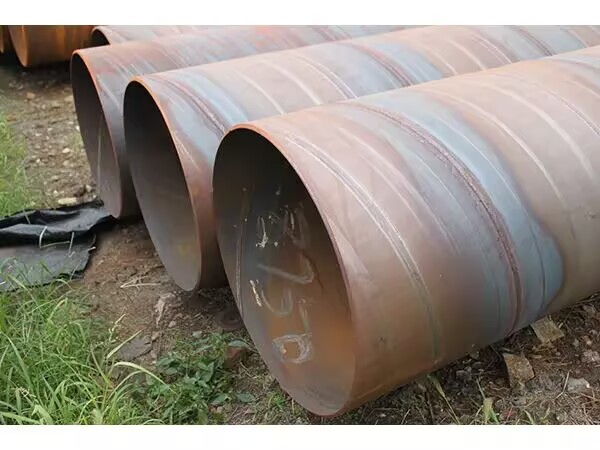Large diameter carbon steel pipes usually refer to carbon steel pipes with an outer diameter of DN600mm (NPS 24 ") or above. This type of pipeline is widely used for transporting fluids (such as water, oil, natural gas, etc.) or as structural supports (such as bridge supports, offshore platforms, etc.) due to its large conveying capacity and high mechanical strength. The following is a detailed introduction to large-diameter carbon steel pipes:
1. Material properties and specifications
The composition of carbon steel: Its main components are iron and carbon, with a carbon content typically ranging from 0.06% to 1.5%. It may also contain small amounts of manganese, silicon, sulfur, phosphorus and other elements.
Diameter range: Large-diameter carbon steel pipes usually refer to steel pipes with an outer diameter of ≥16 inches (406.4 millimeters), but in some projects, they may be defined as steel pipes with an outer diameter of ≥24 inches (610 millimeters).
Wall thickness range: 6-80 mm (Different manufacturing processes are selected based on working conditions).
Length: The standard length is 6 to 12 meters, and longer sizes can also be customized.

Performance characteristics:
High strength: Carbon steel has high strength and is suitable for withstanding high pressure and heavy loads.
Machinability: Easy to weld, bend and machine.
Low corrosion resistance: Rust needs to be prevented through coating, galvanizing or cathodic protection.
Economy: The cost is lower than that of stainless steel or other alloy steels, making it suitable for large-scale application.
2. Manufacturing process
There are mainly two forming methods for large-diameter carbon steel pipes:
seamless pipes and welded pipes.
Hot-rolled seamless/hot-expanded seamless (UOE/JCOE) : Formed in one step through hot-rolling or hot-expanded processes, with a maximum diameter of 1220mm and a wall thickness of 120mm. Steel pipes produced by this forming method have no welds and are suitable for high-pressure scenarios (such as oil and gas transportation). However, this method has a high cost and a long production cycle.
Welded steel pipe
Straight seam welding (LSAW) : After the steel plate is rolled, it is welded along the longitudinal direction. The common maximum diameter can reach 1500mm and the wall thickness is 80mm, which is suitable for thick-walled high-pressure pipelines.
Spiral welding (SSAW) : Spiral rolling and welding of steel plates, suitable for applications with extremely large diameters (up to 3500mm) and relatively thin wall thicknesses.
Resistance welding (ERW) : High-frequency current welding, suitable for medium and small diameter pipes.
3. Main standards
Oil and gas transmission pipe: API 5L PSL1/PSL2 (Xⁿ series).
Pressure pipelines: ASTM A53/A106, ASME SA53/SA106 (NPS ¼ "- 36", S 20 - XXH).
Steel pipe size specification: ASME B36.10M.
4. Main application fields
Oil and gas transportation: Long-distance oil and gas pipelines (such as cross-border gas pipelines).
Water conservancy projects: large-scale water diversion pipelines, drainage systems, pressure steel pipes for hydropower stations.
Structural engineering: Bridge supports, building frames, port pile foundations.
Chemical industry: Transporting media with relatively low corrosiveness (requiring anti-corrosion treatment).
Thermal engineering: Steam pipelines, heating systems.
5. Development Trends
High-strength steel application: Use high-strength carbon steels such as X70 and X80 to reduce wall thickness, lower weight and cost.
Intelligent manufacturing: Automated welding technology and non-destructive testing (such as ultrasonic and radiographic testing) enhance quality.
Environmental protection requirements: Promote the use of green coating technologies and recyclable materials.
